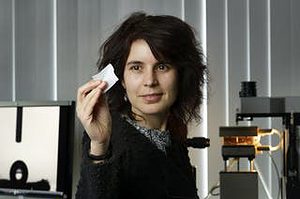A novel fabric primarily made out of cotton with a special polymer coating can absorb water from mist moisture during colder temperatures and automatically release it during warmer temperatures. This makes it an ideal solution for capturing water in places where every bit of it counts, like arid areas where night-day temperatures fluctuate from one extreme to another.

Up to this temperature threshold, the duo has a sponge-like structure at microscopic level which favors water absorption. However, once temperature exceeds 93.2 Fahrenheit (34 C) the material closes up and becomes water-repellent or hydrophobic time at which it releases its water. This cycle starts over again once temperature drops and can be repeated indefinitely.
The material might prove to be no less than a life bringer in arid areas where irrigation systems are difficult to implement and expensive. Arid areas and desert landscapes have a mist or fog roll in at nighttime, where temperatures are well below the necessary water absorption threshold. The solution might prove to be extremely effective and cheap at the same time, as the polymer coating increases the cost per square meter of cotton slightly, by about 12 percent, says the team.
Now the researchers are working on ways to increase the amount of water capable of being absorbed by the cotton fabric itself and control the temperatures at which the polymer-cotton duo can absorb and release water. In theory different fabrics could be manufactured tailored for specific regions of the globe.
Also besides watering crops, the material could very well find other uses such as tents that collect water at night, or sportswear that keeps perspiring athletes dry.
The findings will be published in an upcoming edition of the journal Advanced Materials.
source






